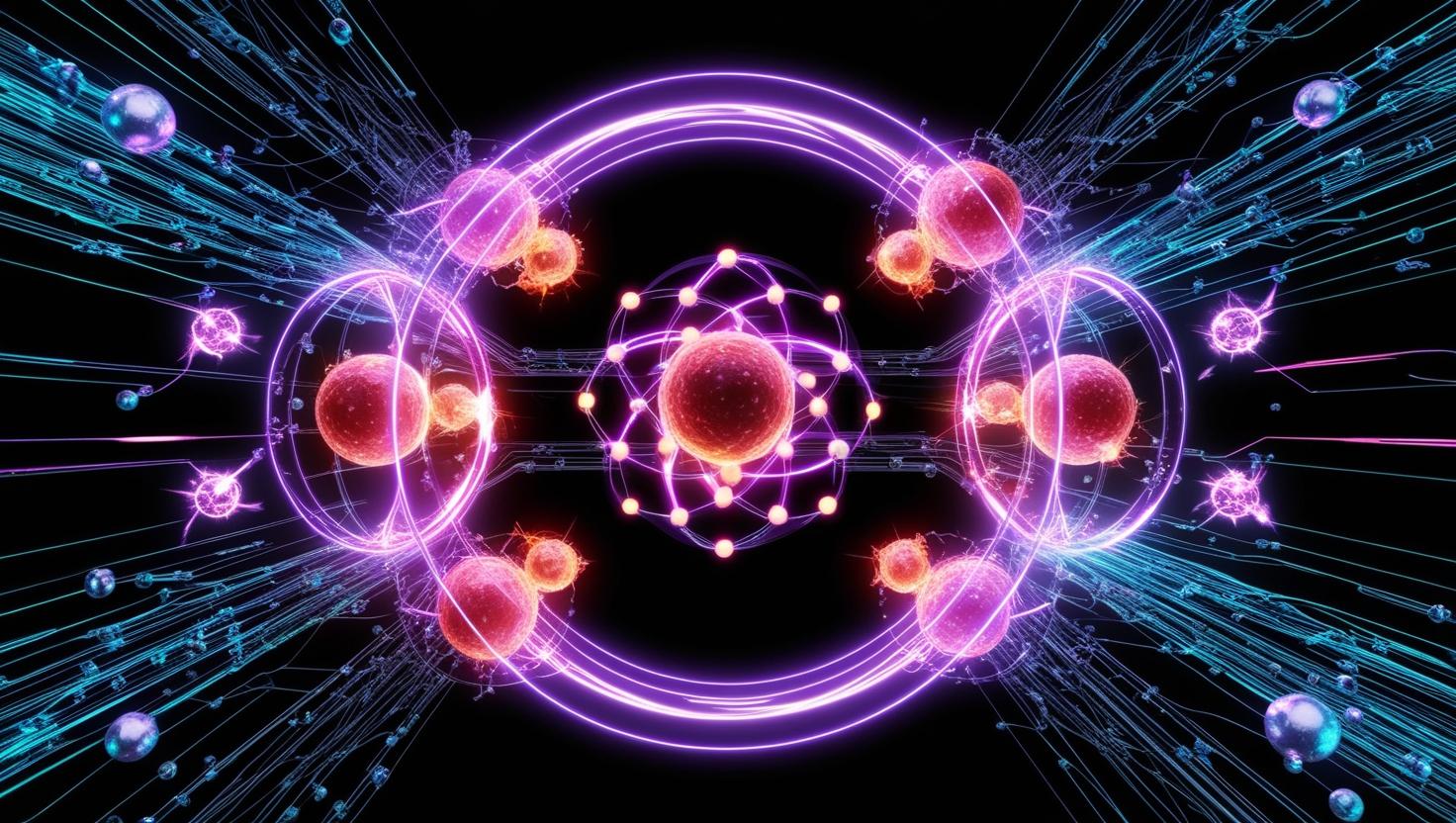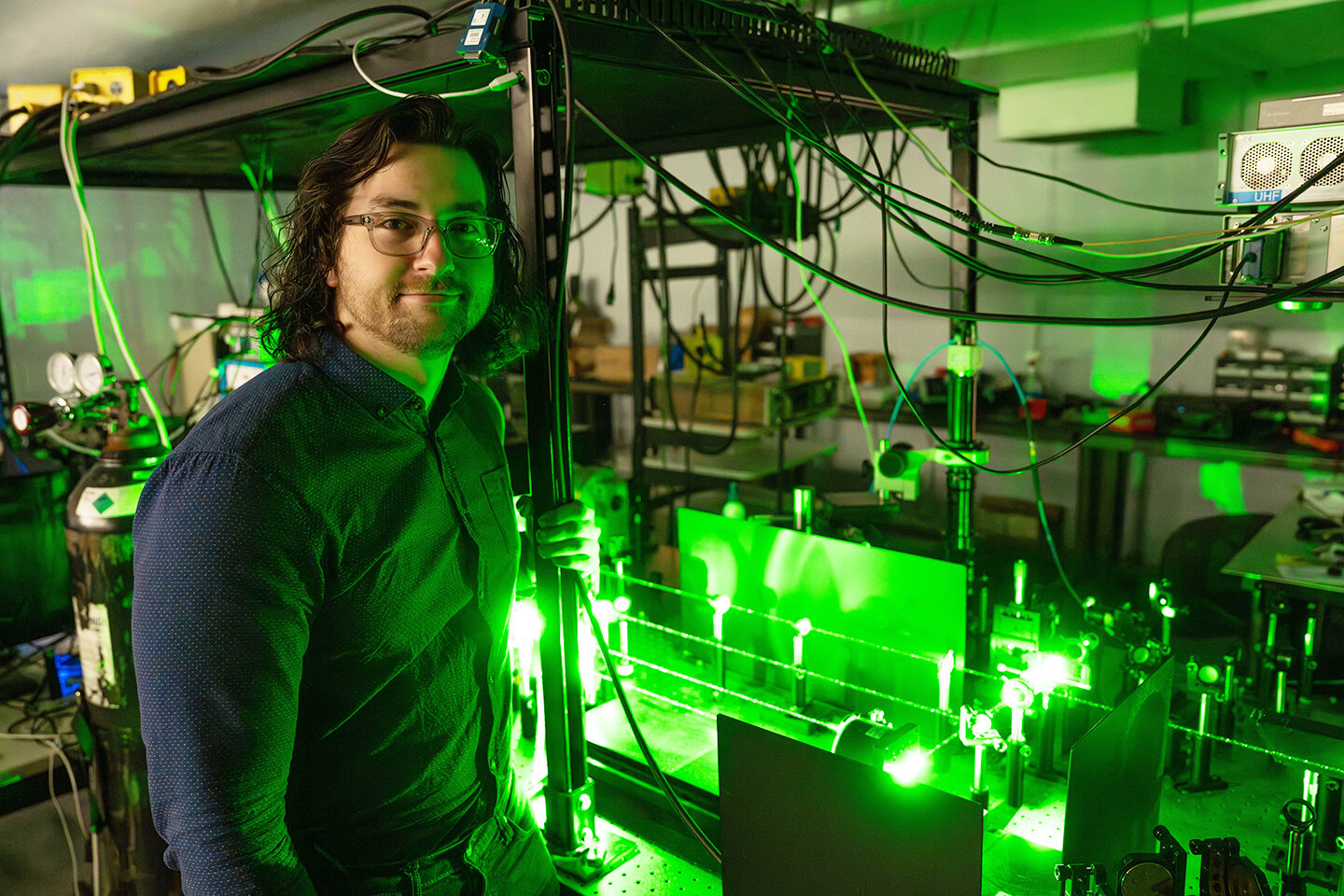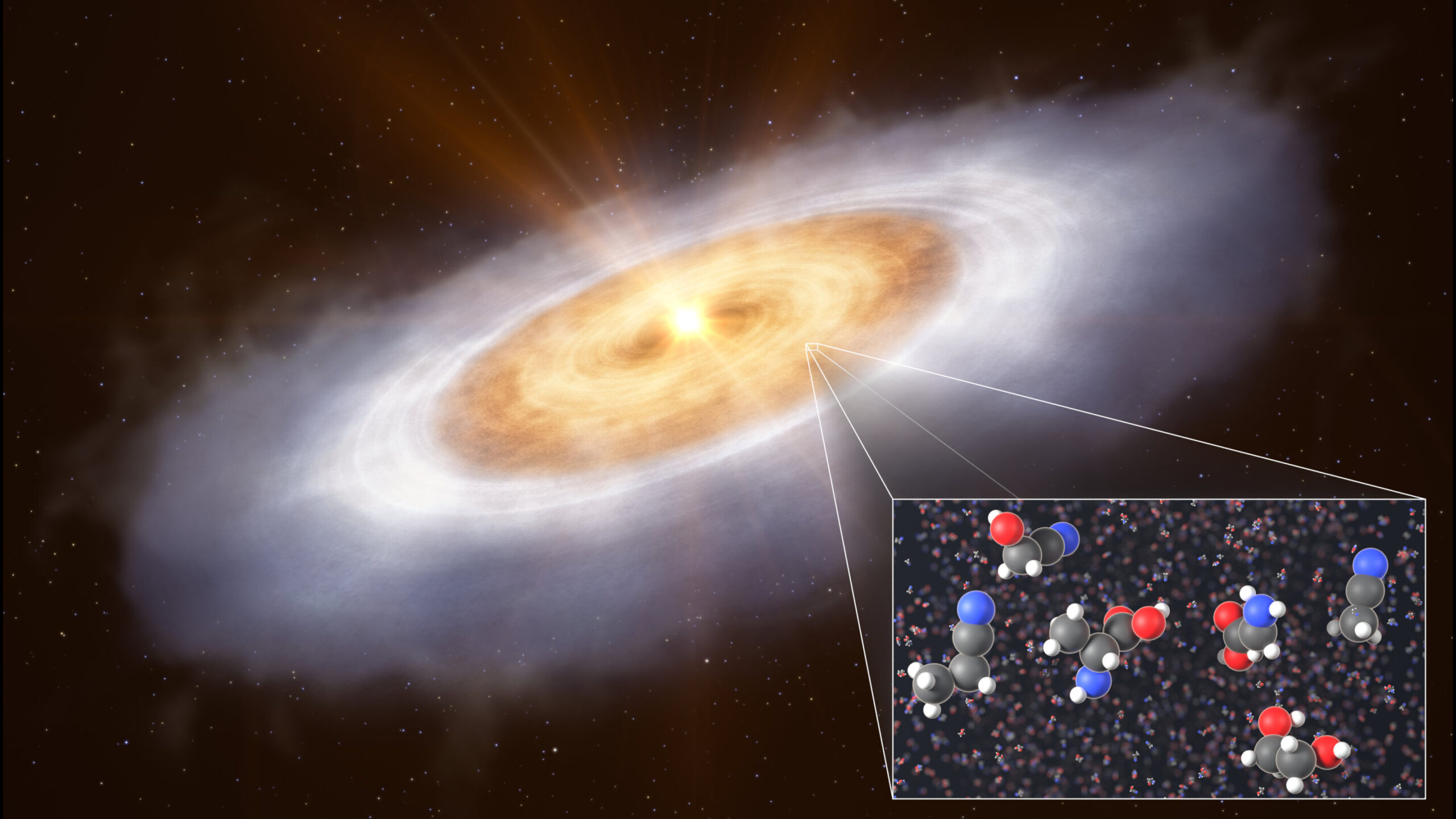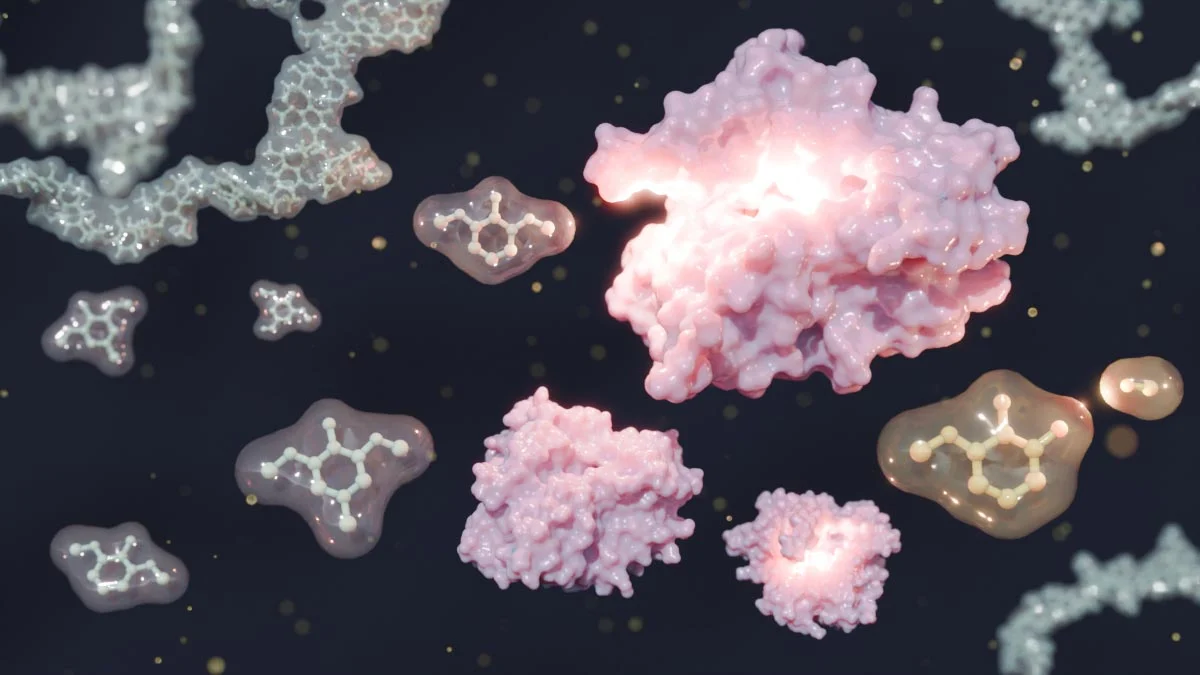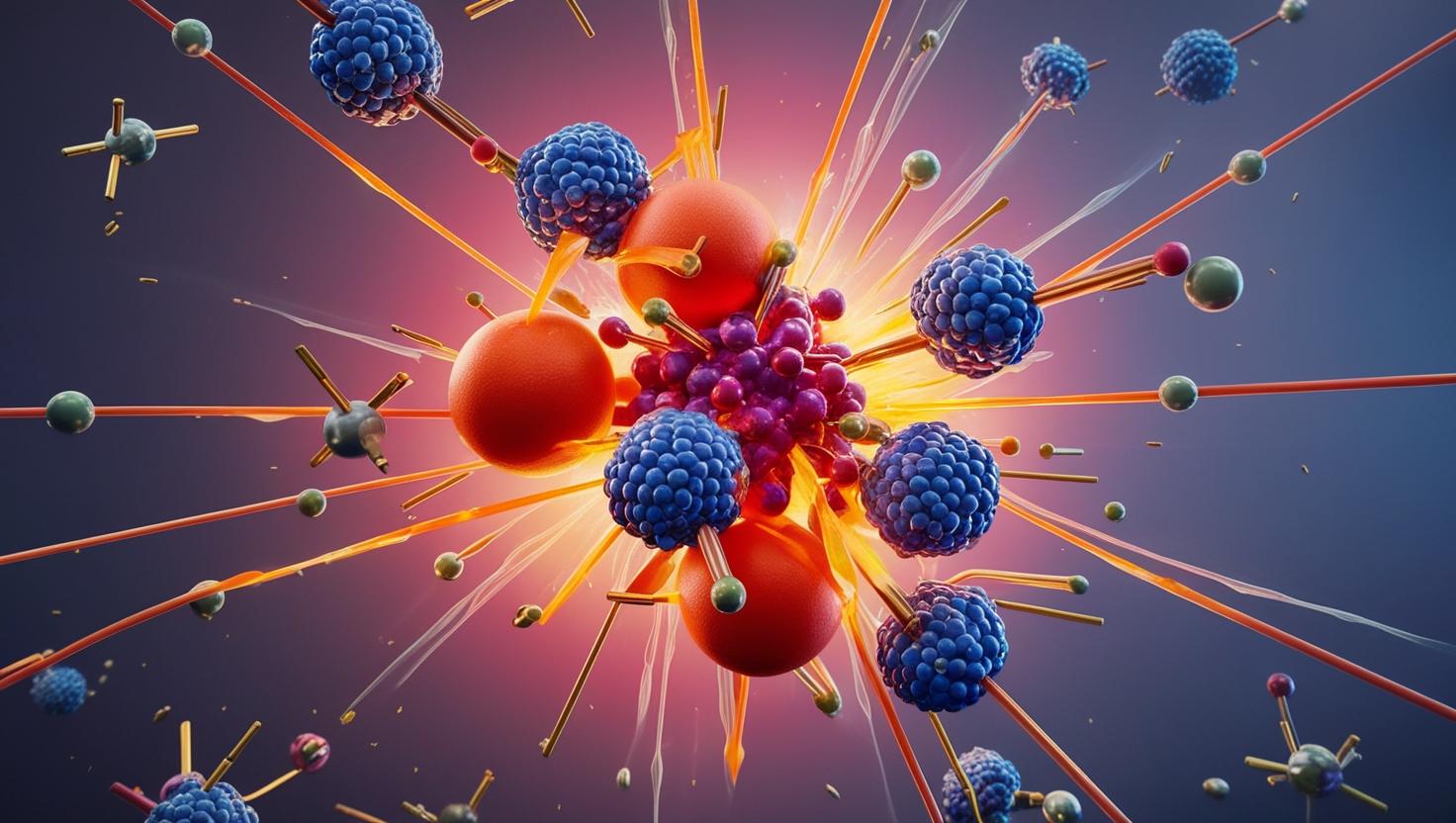This artist’s impression shows the planet-forming disk around the star V883 Orionis. In the outermost part of the disk, volatile gases are frozen out as ice, which contains complex organic molecules. An outburst of energy from the star heats the inner disk to a temperature that evaporates the ice and releases the complex molecules, enabling astronomers to detect it. The inset image shows the chemical structure of complex organic molecules detected and presumed in the protoplanetary disk (from left to right): propionitrile (ethyl cyanide), glycolonitrile, alanine, glycine, ethylene glycol, and acetonitrile (methyl cyanide). Credit: ESO / L. Calçada / T. Müller (MPIA/HdA)
Molecules That Precede Life Found Around Infant Star
In a major step toward understanding the chemical origins of life, astronomers have detected complex organic molecules in the swirling disk of gas and dust surrounding a young star called V883 Orionis. These compounds, including ethylene glycol and glycolonitrile, are considered essential precursors to biological molecules like amino acids and DNA components.
The discovery was made using the Atacama Large Millimeter/submillimeter Array (ALMA), a radio telescope high in Chile’s Atacama Desert. Led by Abubakar Fadul of the Max Planck Institute for Astronomy (MPIA), the research reveals that the ingredients for life may not be unique to our solar system—but widespread across the galaxy.
Life’s Building Blocks Begin in Space
Scientists found 17 complex organic molecules (COMs) in the disk of V883 Orionis. COMs are carbon-based molecules made of at least five atoms, often serving as early-stage life chemicals. One such molecule, glycolonitrile, is a known precursor to amino acids like glycine and alanine, and even adenine, a key component of DNA.
This finding bridges a long-standing gap in our understanding of chemical evolution—from the raw material in interstellar clouds to the emergence of full planetary systems. According to the team, this supports a continuous chemical lineage, not a reset.
“Our results suggest that protoplanetary disks inherit complex molecules from earlier stages,” said co-author Kamber Schwarz. “And they can keep evolving these molecules further.”
A Heated Origin
Stars like V883 Orionis go through a violent growth phase where gas crashes into the forming star, causing dramatic bursts of heat and radiation. This energy warms the surrounding disk—sometimes enough to vaporize frozen molecules locked in icy dust grains. That’s how molecules like ethylene glycol and glycolonitrile become detectable.
“These outbursts are powerful enough to thaw ices in the disk, releasing complex chemicals into space,” Fadul explained.
The icy origins of these molecules mean they typically remain hidden—unless disturbed by heat or a space probe. In comets, for example, sunlight causes these chemicals to sublimate, creating the glowing tails we see from Earth. ALMA detects the unique radio fingerprints of such freed molecules with incredible sensitivity.
How These Discoveries Change the Story
Before this study, many scientists thought the harsh conditions during star formation would destroy any earlier organic chemistry. This led to the idea that life’s ingredients had to be synthesized all over again in young planetary systems. But this research suggests otherwise.
It appears that the seeds of life are not only formed early—but can survive the chaos of star birth, becoming part of new planets, moons, and potentially, living worlds.
Tushar Suhasaria, head of MPIA’s Origins of Life Lab, noted that laboratory experiments show ethylene glycol can form via UV irradiation of ethanolamine, a molecule recently found in space. This opens up even more possibilities for how these chemicals evolve.
The Road Ahead
Despite the breakthrough, scientists say more data is needed. The team is still analyzing the complex spectra collected by ALMA, and higher-resolution observations could confirm these tentative detections—and potentially uncover even more exotic molecules.
“We might need to look at other parts of the electromagnetic spectrum to catch what we’re missing,” Fadul said.


